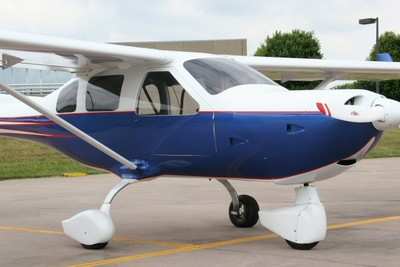Fri, Feb 19, 2016
Special Light Sport Aircraft Will Require Manufacturer Approval For The Installation Of ADS-B Out Equipment
Aircraft that are certificated as special light sport aircraft (S-LSA) must have a pathway established by the aircraft manufacturer for the installation of ADS-B Out. The FAA is also urging these manufacturers to establish similar pathways for the installation of angle of attack indicator’s.

It’s important to remember that S-LSA’s are certificated by complying with industry standards for certification developed through the ASTM committee process. This means that owners of these aircraft must have the manufacturers develop, or approve, a system for the installation of equipment that was not part of the original certification.
Despite the fact that the U.S. regulation will require ADS-B Out in the year 2020, and that it’s widely recognized that an angle of attack indicator can provide additional protection from loss of control accidents, the manufacturers must be involved in approving the installation of these devices.
An aircraft that holds a ‘standard’ airworthiness certificate can have this additional equipment installed through a certified maintenance process. For example, if you own a Cessna 172 and want to change-out the avionics for the purpose of ADS-B, it can be done through your local FAA approved avionics shop… Cessna doesn’t get involved.
However, that is not the case with an S-LSA because it holds a ‘special’ airworthiness certificate. The manufacturer must provide an approved pathway for the installation and issue a letter that allows the installation. It is the manufacturer’s responsibility to assure that the aircraft remains in compliance with the FAA accepted industry ASTM consensus standards when they approve the installation of alternative avionics.
While the S-LSA manufacturers must be involved in approving the addition or changing of equipment in their aircraft, the ADS-B unit must comply with the performance requirements of the technical standard order for ADS-B Out, but it does not have to be TSO approved by the FAA.
Here’s the bottom line; owners of S-LSA’s that want their airplanes to remain in that certification status need to work with the manufacturers to determine how they will comply with ADS-B requirements, or for the installation of other equipment such as an angle of attack indicator.
(Image of an S-LSA from file)
More News
Aero Linx: Transport Canada We are a federal institution, leading the Transport Canada portfolio and working with our partners. Transport Canada is responsible for transportation p>[...]
Gross Navigation Error (GNE) A lateral deviation from a cleared track, normally in excess of 25 Nautical Miles (NM). More stringent standards (for example, 10NM in some parts of th>[...]
From AirVenture 2017 (YouTube Edition): Flight-Proven Booster On Display At AirVenture… EAA AirVenture Oshkosh is known primarily as a celebration of experimental and amateu>[...]
Aircraft Parachute System (CAPS) Was Deployed About 293 Ft Above Ground Level, Which Was Too Low To Allow For Full Deployment Of The Parachute System Analysis: The day before the a>[...]
Also: 48th Annual Air Race Classic, Hot Air Balloon Fire, FAA v Banning 100LL, Complete Remote Pilot The news Piper PA-18 Super Cub owners have been waiting for has finally arrived>[...]
 ANN's Daily Aero-Linx (06.29.25)
ANN's Daily Aero-Linx (06.29.25) ANN's Daily Aero-Term (06.29.25): Gross Navigation Error (GNE)
ANN's Daily Aero-Term (06.29.25): Gross Navigation Error (GNE) Classic Aero-TV: Anticipating Futurespace - Blue Origin Visits Airventure 2017
Classic Aero-TV: Anticipating Futurespace - Blue Origin Visits Airventure 2017 NTSB Final Report: Cirrus SR22
NTSB Final Report: Cirrus SR22 Airborne Affordable Flyers 06.26.25: PA18 Upgrades, Delta Force, Rhinebeck
Airborne Affordable Flyers 06.26.25: PA18 Upgrades, Delta Force, Rhinebeck



